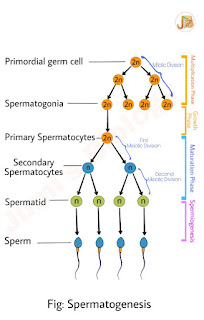Sickle-Cell Anaemia: Symptoms & Transmission ||Class 12 Biology
Sickle-Cell Anaemia is an autosome linked recessive trait. This disease can be transmitted from parents to the offspring. When both the partners are carried for the gene (Heterozygous).
It results in an abnormality in the oxygen carrying protein haemoglobin found in red blood cells (RBCs). This leads to the shape of RBC from biconcave disc to elongated sickle like structure.
Normal RBC
Sickle like RBC
Problem in this disease typically begin around 5 to 6 months of age.
The disease is controlled by a single pair of allele,HbA And HbS. Only homozygous individuals for HbS , i.e., HbS HbS show the diseased phenotype. While the heterozygous individuals, i.e., HbA HbS appear unaffected but they are carrier of the disease. There is 50% chances of transmission of the mutant gene of the progeny leading to the sickle-cell trait.
This disease is caused by the substitution of an amino acid glutamic acid (Glu) by valine (Val) at the sixth position of the beta globin chain of the haemoglobin molecule. The substitution of amino acid in the globin protein results due to the single base substitution at the sixth codon of the beta globin gene from GAG to GUG.
The mutant haemoglobin molecule undergoes polymerisation under low oxygen tension causing the change in the shape of RBC.
Sickle-cell anaemia have the following sign and symptoms:
Anaemia, pain in joints, fatigue, dilute urine or blood in urine, inflamed fingers or toes, shortness of breath, vision problem etc.






Comments
Post a Comment
If you have any doubts,please let me know